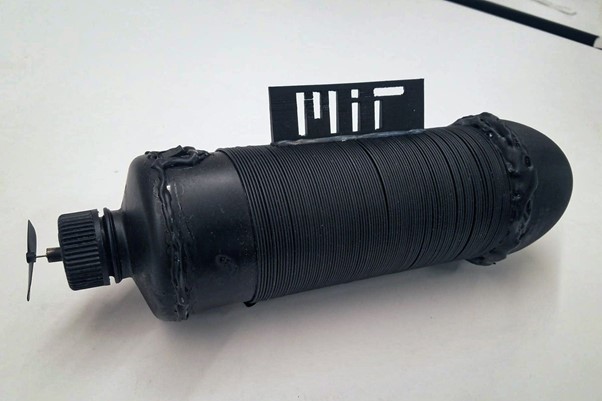Believe in the weave
Researchers have used a drawing out process to create a lithium-ion battery fibre that can be coated and woven into fabric. It is waterproof, flexible and fire-resistant and is likely to weave its way into progressive design ideas, says Caroline Hayes
Today, wearable devices are lightweight, undeniably convenient, but researchers are still looking for more convenience, electronics that can be woven, worn and washed. Wearable electronics that are flexible, integrated into fabrics rather than attached after the garment has been created offer even more convenience. An announcement from MIT (Massachusetts Institute of Technology) in Boston, USA, has brought renewed hope for an effective, reliable power source to charge electronics in clothing.
Researchers have developed a 140m-long rechargeable, lithium ion (Li-Ion) fibre battery that is flexible enough to be woven into textiles and which can be washed.
Material considerations
Fibres woven into materials can provide the means for self-powered communications, sensing and computation via clothing as well as batteries which can be structural in devices to make products even more compact because they do not need to include space for a battery or other form of power supply.
Until this innovation, fibres which include electronic components, such as LEDs, photo sensors or comms systems, required an external power source.
It is manufactured using battery gels and a standard fibre-drawing system where a large cylinder containing all the components is heated to just below its melting point. The use of gel electrodes and gel electrolyte makes the fibre battery fire-resistant and therefore safer; other fibre batteries which use liquid electrolyte which catches fire instantly and expands.
The cylinder material is drawn through a narrow opening which compresses the drawn out thread to a fraction of its original diameter, while maintaining the original arrangement of component parts.
A drawn out process
The drawing out process means the key elements are inside the fibre and covered with a protective coating rather than being a power source which begins as a fibre and which has materials applied to it.
The resulting battery is “a few hundred microns” thick. Its aspect ratio, i.e., the length-to-width fraction, is up to one million. Its robust, flexible nature enables the fibre to be integrated into textiles and fabrics using standard weaving equipment.
The 140m fibre has a storage capacity of 123mAh, making it sufficient to charge smart watches and phones.
The exterior coating makes the fibre stable and waterproof. Even when partially cut, the fibre battery continued to power an LED, reports the MIT research team, which indicates there is no electrolyte loss or short-circuiting.
Potential power
As a proof of concept, the researchers made a fibre battery that is 140m long using this method. According to Tural Khudiyev, one of the researchers, who is now an assistant professor at the National University of Singapore, this engineering feat shows that there is “no obvious upper limit to the length. We could definitely do a kilometer-scale length,” he believes.

The MIT fibre battery wrapped around a toy submarine to power the drone vessel. (Picture: MIT)
There is also a demonstration device with a Li-Fi communications system, which uses the fibre battery. Li-fi uses pulses of light to transmit data. The demonstration also includes a microphone, pre-amp, transistor and diodes and establishes an optical data link between two woven fabric devices.
“When we embed the active materials inside the fibre, that means sensitive battery components already have a good sealing,” Khudiyev explains. The active materials are well integrated, so they do not change their position during the drawing process to create the fibre.
Multiple devices can be embedded into an individual fibre, adds another team member, Jung Tae Lee, currently a professor at Kyung Hee University in South Korea, whereas other approaches require multiple fibres.
In the published research, an LED and Li-Ion battery were integrated into a single fibre, but Lee believes three, four or more devices can be combined in a single fibre in the future. “When we integrate these fibres containing multiple devices, the aggregate will advance the realisation of a compact fabric computer,” he says.
Using the fibre in 3D printing will create the structure of solid objects with their own power source. To demonstrate this concept, the team wrapped the battery fibre around a toy submarine to provide it with power. Creating the casing or integral part of devices using the battery fibre will reduce the overall weight of the final produce as well as improving the efficiency and range that can be achieved, speculates the research team. The next step says Lee is for computational units, including Li-Fi, to be put inside everyday objects.
The team has already applied for a patent on the process and Khudiyev says fibre batteries could be available for use in commercial products within a few years.










